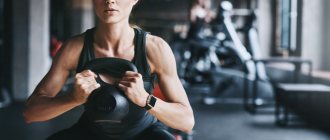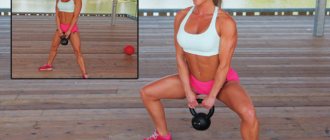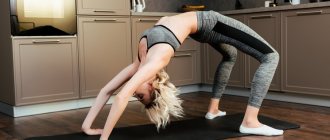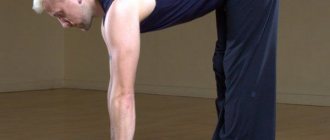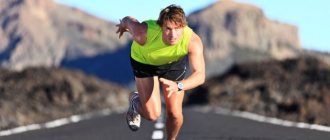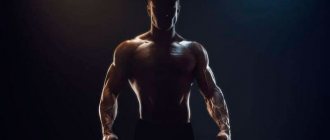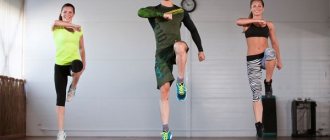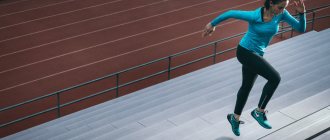Author Igor Bukker
06.04.2021 14:10
Health » Beauty » Fitness
Squats have always been the most popular and accessible exercise, included in almost any set of exercises. Recently, there have been reports that they can be harmful to health. What's the matter? Is it really that dangerous? Why and what to do? And is it necessary to do them? And how can you do them? When, after all, squats are a great benefit, and when - an undoubted harm.
Problem knees, joints. How to become and be healthy? How many squats can you do and at what age? Is it possible to replace squats with something less dangerous (for example, a bicycle, exercise machine, swimming), but still get the long-awaited effect? How to squat correctly so that your health is beneficial and not harmful. Neurologist, reflexologist of the highest category Igor Orlov told Pravda.Ru presenter Igor Bukker about all this and much more .
— Igor Dmitrievich, probably, almost every person was prescribed squats; they were recommended for all ages and health conditions. We did squats in kindergartens and pioneer camps, in the army and educational institutions. People have always been firmly convinced that squatting is good and healthy. Now, suddenly, revelations and warnings began to pour in from all sides. It turns out that regular squats can simply destroy your body! Now, of course, you can find a lot of different conflicting information, because you can find everything on the Internet.
As a specialist, tell us the truth about this. To what extent can squats really be dangerous and destructive to our knees, lower back, and posture? And if it is still possible and necessary to do them, then how?
— I agree that before you give a person the task to squat, you still need to explain how to do it correctly. It is very important to follow the rules for doing this exercise.
- First, a basic stance—your feet should be shoulder-width apart.
If a person squats with his legs together, he will simply lose his balance and thus the geometry will be disrupted. This can happen on the side of the pelvis, on the side of the knee joint, and on the side of the ankle joint.
The toes should be slightly pointed inward, that is, the heels are at shoulder level, and the toes should be slightly pointed inward, this gives stability. Since we are giving the exercise, the person must be in a stable position.
- The second point is that the pelvis must go back, under no circumstances should it go forward.
And while performing this exercise - squatting with weight or without weight - it doesn’t matter, you always need to make sure that your heels do not leave the floor.
These are the main points that help us avoid injury.
If, for example, we close our legs and squat with our feet closed, then our balance is disturbed. And if we tear off the heels while squatting, then the person again loses balance and can get injured.
— Are there any restrictions on age and any diseases? When should a person not be given this load or engage in such exercises?
- This is a completely normal and natural exercise for a person at any age. There are no age restrictions, as long as a person can stand, run, and move normally.
Squats. Knee pain
Squats
18.06.2020 19:43
Author: Fitness trainer Sergey Konstantinov
Finding a simple, effective and universal exercise that will help improve the condition of the body and tidy up the figure is the dream of many supporters of a healthy lifestyle. In this case, you should pay attention to squats. This old and effective technique allows you to activate the functioning of body tissues, improve your mood and burn extra calories.
Tips: how to make the benefit higher
- An indispensable condition is to always exercise after thoroughly stretching the target muscles. Strength training on cold muscles has a bad effect on the body, and it’s not far from ruptures;
- Carefully work out your movement technique. At first, it would be useful to seek the help of more experienced athletes. For beginners, it’s better to take care of safety nets;
- If you want to lose weight, the benefits of squats will be greater if you follow a special diet;
- Those who, on the contrary, strive to gain muscle volume should also follow a special diet. The benefits will increase significantly;
- Exercise regularly, without skipping, follow the program exactly. Consistency is the most important factor in performance.
Now you know why girls need squats - as you can see, the exercise has benefits in all areas. Moreover, it is accessible and versatile. You don't have to buy an expensive gym membership or hire a fancy trainer. Study the materials on the Internet in detail, watch a couple of thematic videos and go ahead, do squats right at home. The benefits of home workouts are no less than those done in the gym. Perhaps there is less motivation at home, but if you are suddenly overcome by laziness, we advise you to remember what squats affect, and also imagine yourself on the beach in the summer. Slender, healthy, eye-catching. What else do we women need?
What's the benefit?
This type of gymnastics is rightfully considered simple and effective. Squats are part of a person’s daily natural actions, since this simple and effective movement is performed regularly: during breakfast, sitting down on a chair, at work, when you have to squat on an office chair and in many other situations.
When performing this habitual movement, many people are not fully aware of its benefits. Here are the main positive aspects associated with doing squats:
- Strengthening the leg muscles. During squats, the calf muscles, thigh muscles, and buttocks actively work. As a result of regular training, the athlete manages to pump up these areas and improve his appearance.
- Improved posture. When performing squats, the back muscles are strengthened, since in the process of doing them you have to activate this part of the body. As a result, the habit of keeping your back straight is formed, which has a positive effect on your posture.
- Increased muscle mass. If you squat with weights, you will be able to build muscle. The main thing is to first develop a training program and follow its points.
- Working out the muscles of the lower body. Squats allow you to actively use the muscles of the legs, lower back, and buttocks during training. After some time you will be able to admire the excellent results.
- Activate the activity of the cardiovascular system. This is a great cardio workout. Therefore, to strengthen the heart and blood vessels, it is recommended to include this complex in the daily exercise program. After 4 weeks of training, you can confidently note the positive effect of the exercises - your strength and endurance will increase.
- Increasing the body's resistance to various diseases. Starting squats is a great solution to improve your immune system. In addition, training improves mood and increases vitality.
- Working out coordination of movements. Exercises allow you to develop an excellent skill - strengthen coordination of movements. Regular training makes it possible to become accurate, which will certainly come in handy in everyday life.
Even schoolchildren know about the benefits of squats, since this gymnastics is part of the normative program. It is not forbidden to squat even in old age, since this exercise perfectly trains the heart muscle. Just before starting squats, it is important to warm up first. Without warming up, there is a high risk of injury.
Who is at risk?
Pelvic floor muscle dysfunction occurs when the muscles are stretched, weakened, or too tight. Some people have weak pelvic floor muscles from childhood, but more often problems develop as they age. The risk group includes
- pregnant women and those who have already given birth,
- women going through or past menopause,
- women who have undergone gynecological surgery, such as hysterectomy,
- men who have had their prostate gland removed
- high-level athletes such as gymnasts, runners or trampoline jumpers.
Additional risk factors include:
- back pain,
- pelvic trauma or radiation therapy,
- constant constipation (you have to strain to empty your bowels),
- chronic cough or sneezing (asthma, smoking or hay fever),
- overweight or obesity,
- Regular lifting of weights at work or in the gym.
Let's look at these cases in more detail.
Pregnancy and childbirth
affect the physical shape of the pelvic floor muscles. The growing fetus puts pressure on the pelvic floor muscles. During pregnancy, the hormone relaxin is released, which makes tissue more elastic, allowing the muscles and ligaments of the pelvic floor to stretch during childbirth. Sometimes they remain stretched for a long time. The action of relaxin and fetal pressure prevents the muscles from holding the pelvic organs in the correct position.
Women at greatest risk during pregnancy and childbirth are those who:
- gave birth repeatedly
- gave birth using instruments: forceps or vacuum extractor,
- the second stage of labor lasted more than an hour,
- during childbirth there was a rupture of the perineum,
- the baby weighed more than 4 kg.
During menopause
The female body undergoes significant changes. All muscles weaken, including the pelvic floor muscles. Because they support the pelvic organs, problems in this area can occur, particularly difficulty with bladder or bowel control.
Menopause is often accompanied by weight gain, which also weakens the pelvic floor muscles.
The situation is also aggravated by:
- less elastic bladder
- anal trauma as a result of childbirth,
- chronic diseases (diabetes or asthma).
Gynecological or pelvic surgery
Treatments such as hysterectomy or radiation therapy can disrupt the shape of the pelvic floor muscles and cause incontinence.
After prostate surgery
Incontinence also often develops. Most men regain full bladder control within 6 to 12 months, and exercise makes a significant difference.
Professional athletes and just big fitness enthusiasts
often experience constant strong pressure on the pelvic floor. As a rule, these are gymnasts, trampoline jumpers and runners, fans of games in which you have to hit the ground a lot, such as basketball or netball. Athletes who lift weights or do high-intensity interval training are also at risk.
Urinary incontinence may be common when performing these types of exercises, but this is not normal.
Effect
If you squat regularly, you can get undeniable benefits for organs and tissues. This is due to the fact that during training a large number of muscles are involved, which begin to actively work. At the initial stages, preference should be given to the classic squat technique. And only after carefully working it out can you move on to more complicated gymnastics.
Here are the main positive effects:
- Toned and firm buttocks.
A beautiful thigh area is admired by both men and women. To give this part a toned and attractive look, you should include squats in your daily training program. After a month of training, you can observe an excellent result - an attractive appearance of the forms is ensured.
- Strengthening tendons, joints and ankles.
During squats, the lower part of the body actively works. In this regard, the active work of the limbs is noted, which has a positive effect on the development of muscles, joints and tendons.
In order not to overshadow the positive effect with unpleasant consequences in the form of dislocations, sprains and other problems, it is important to monitor the even distribution of the load on the body. You should not overload the body, trying to achieve optimal results in a short time. In squats, as in other types of gymnastics, it is important to maintain consistency and uniformity.
Records[edit | edit code]
Typically, you can lift slightly less weight with a squat than with a deadlift (more with special equipment). Squat records are recorded by various powerlifting organizations. Due to the fact that the rules regarding squat technique and doping differ in different versions, the squat records also differ from each other. The absolute world record in the equipment version (IPA) belongs to the Israeli athlete Vlad Alkhazov and is 567 kg; in the IPF - the only federation recognized by the sports committees of most states and negotiating with the IOC on the inclusion of powerlifting in the program of the Summer Olympic Games - the absolute record in squats is 457.5 kg and belongs to the American Shane Hamman. The absolute record for squats in bandages was set on December 19, 2010 by Russian athlete Andrei Malanichev, the weight of the barbell was 450 kg[25]. The absolute bare squat record was set by American athlete Don Reinhodt in 1975 and is 423.5 kg (934 lb). Paul Anderson squats with a weight of 544.5 kg. In Russia, only the National Powerlifting Association has separate grade standards for squats[26].
Harm
If we talk about the adverse effects that are possible when doing squats, then this type of exercise in itself is safe. Problems can occur if you squat incorrectly. And this is due to this:
- During squats, there is an active load on the joints, muscles and tendons. If you complicate the exercise in the early stages with insufficient preparation, there is a high risk of injury.
- You should not do squats if your doctor advises you to temporarily stop exercising. Unauthorized performance of gymnastics in the presence of contraindications in most cases leads to a deterioration in health and damage to the limbs.
These are the main points associated with the negative aspects that can occur when performing squats. To prevent anything bad from happening, you should be attentive to your health and respond to signals about even the most minor failures.
Half squats and bodybuilding
Athletes of this sports discipline also include half-amplitude squats in their training program. With this exercise they work the quadriceps muscle (quadriceps). However, a half-squat in their case is not the best solution. Stretching of muscle tissue occurs much more intensely when doing full squats or performing exercises with a barbell that involve adding pauses while standing up.
Half squats are most often used when you need to eliminate the work of the buttocks, shifting the emphasis to the quadriceps muscles. The exercise is definitely not suitable for pumping up all groups. But it is great for bringing the body out of a state of stagnation (when muscle growth stops). The introduction of half-squats into the training regimen often gives a kind of impetus, and the muscles begin to actively develop again.
Thus, it is advisable to perform a half-amplitude squat if the athlete is not technically able to do classic squats correctly. Typically due to limited physical capabilities. We have already said above that individual body features must be taken into account.
In general, there is no great need for performing half squats for athletes training to build muscle mass. But including them in your lesson plan for variety is not a bad idea.
Contraindications
Squats are a harmless form of gymnastics. But even here it is important to follow safety rules and take precautions if necessary. Having decided to start training, you should first study the list of contraindications for which this type of gymnastics should be excluded from the training program.
Here are the main violations for which you should stop doing squats:
- Arthritis and arthrosis.
Inflammatory diseases of the knee, hip joints, and their injuries can provoke a relapse. To prevent this from happening, you need to stop squatting. If you really want to continue training, you should first consult a doctor.
- Spinal diseases.
Osteochondrosis and scoliosis are reasons to stop squatting. And this is due to an increase in the load on these parts of the musculoskeletal system. Especially you should not use a complicated version of squats or use weights. Such a complicated approach can provoke a worsening of the condition.
- Diseases of the cardiovascular system.
In case of myocardial dysfunction or hypertension, you should refrain from quickly changing body position. If you neglect this rule, you can provoke pressure surges and an attack.
- Excess body weight.
We are not talking about a few extra kilograms, but about dozens. And with such excess weight, it is better to refrain from squats. The fact is that when performing exercises there is an increased load on the joints, which can cause damage to them if the body weight is high.
Before you start squatting, it is important to get a general idea of the state of your body. If there are any disturbances or alarming symptoms that cause concern, you should contact a doctor who will professionally assess the situation and recommend the optimal solution. Also, you should not continue training if your health begins to noticeably deteriorate during the process of doing squats. In this case, you should stop exercising so as not to provoke relapses of various diseases.
Sources[edit | edit code]
- Paul Dillet “Five Steps Up” (Russian) // Flex: magazine / chapter. ed. I. Lozinsky. - TORES LLC, 1998. - No. 1 (February, vol. 2). — P. 52-60.
- https://www.exrx.net/WeightExercises/GluteusMaximus/BBSquat.html
- “Biomechanics of the knee during closed kinetic chain and open kinetic chain exercises,” Medicine and Science in Sports and Exercise, vol. 30-4 (April), pp. 556—569, 1998
- "Complete Keys to Progress", John McCallum, ISBN 0-926888-01-3
- “Safety of the Squat Exercise,” Current Comment from the American College of Sports Medicine, pp. 1-3, March 2000
- https://www.pponline.co.uk/encyc/squats-how-safe-is-it-to-perform-a-squat-exercise-319?#
- “The effect of the squat exercise on knee stability,” Medicine and Science in Sports and Exercise, Volume 21 (3), pp. 299—303, 1989
- https://www.steelfactor.ru/doc/218
- Jimmy Pena (MN, USSR) “Wide stance squats vs. front squats.” (Russian) // “MuscleMag International” (English) Russian. : magazine / chap. ed. Johnny Fitness. - “MUSCLEMAG RUSSIA”, 2013. - No. 4(7). — P. 26.
- Squat safety - Training Tips - Cover Story - American Fitness Articles | Find Articles at CBS MoneyWatch.com
- https://www.myfit.ca/exercisedatabase/viewanexercise.asp?table=exercises&ID=136
- Kreighbaum, E., Katharine, B. M. (1996). Biomechanics; A Qualitative Approach for Studying Human Movement, Allyn & Bacon, 4, Pgs 203-204.
- Stuart McRobert, Insider's Tell-All Handbook on Weight-Training Technique. isbn:9963616097
- https://exrx.net/WeightExercises/Quadriceps/BBFrontSquat.html
- Jim Stoppani (D.S.) “Crunching in the knees and squats” (Russian) // Flex: magazine / chapter. ed. Igor Odnenko. - TORES LLC, 2011. - No. 1. - P. 27. - ISSN 1736-7190.
- https://biceps.com.ua/trening/mahni-ruchkoy-%C2%ABzhenskim-uprazhneniyami%C2%BB
- https://www.exrx.net/WeightExercises/Quadriceps/WTSissySquat.html
- https://www.verywell.com/best-butt-exercises-1230773
- https://www.fit4woman.ru/plies.html
- https://abcbodybuilding.com/exercise3/zerchersquat.htm
- https://cbass.com/Furey.htm
- https://fitn.ru/info/page_122_26.html
- https://www.verywell.com/squats-for-the-buns-hips-and-thighs-part-2-1231324#step3
- Exercise Library of Tutorials on Exercise Techniques and Equipment – Ways to Get Fit – American Council on Exercise
- https://www.powerliftingwatch.com/records/raw/world
- https://www.xn—-7sbjtacqslcmgoahmu2n2b.xn--p1ai/
- Jim Stoppani (D.S.) “Bigger legs, better heart” (Russian) // Flex: magazine / chapter. ed. Igor Odnenko. - TORES LLC, 2011. - No. 1. - P. 22. - ISSN 1736-7190.
Errors
Beginner athletes often make the same type of mistakes when performing squats. This circumstance significantly increases the load on certain areas of the body, which, if further performed at this pace and type, can provoke injury.
To make squats comfortable and effective, it is recommended to train in front of a mirror in the initial stages. This method allows you to evaluate the correctness of the elements and avoid negative consequences if the squat technique is violated.
Here are the main points to pay attention to when performing squats:
- Neglecting warm-up.
Before you start squatting, it is important to first stretch your body. Ignoring this part of the training can provoke dislocations, sprains and even fractures. Therefore, before the main part of the training, you can do rotations, turns, and running in place. If the workout takes place outside, you can jog 2 laps.
- Uncontrolled increase in load.
A common mistake made by beginners is to immediately take on gymnastics with complex elements and use weights. This approach will not bring any benefit, but will result in injury and deterioration of well-being.
- Hunched back.
You should squat with a straight back to avoid spinal injuries. Therefore, during exercise, you should carefully monitor the position of this part of the body during squats to prevent deterioration in well-being.
- Neglecting pain symptoms.
If squatting has become unbearably painful, then this reaction of the body should not be neglected. It is important to stop training until the condition of the body is fully clarified and, in the absence of contraindications, continue training.
In the initial stages of doing squats, it is important to carefully monitor the correct execution of the movements. After all the elements have been brought to automaticity, then it will be possible to remove the mirror and squat without contemplating yourself from the outside.
Methods
1RM values were determined for a full squat (hamstring touching shin), parallel (thigh below the top of the knee), and half squat (knee flexed 90°, squat above parallel). This was done to ensure that the subjects experienced the same load at any squat depth. For example, a weight of 85% 1RM for a full squat would be too light for a half squat.
Then the actual testing began. It included two series of nine squats with different depths and loads, performed in random order. Participants performed full, half, and parallel squats at 0%, 50%, and 85% 1RM. They used the technique that was most comfortable for them, but each girl's foot position and stance width were consistent across all trials. After crouching, the participants held this position for a second to minimize the rebound.
Maximum knee joint moment was calculated using data from the force platform and recording cameras. The maximum moment is convenient because its value is linearly related to the magnitude of patellofemoral tension, which, in turn, can cause patellofemoral pain syndrome and cartilage destruction.
Technique
Before you start squats, it is important to first study the technique of doing them. The effectiveness of training and the absence of disruptions in the body during the implementation of gymnastic complexes depend on strict adherence to this nuance.
To immediately set a successful start, it is important to pay attention to the squatting technique:
- Starting position – feet shoulder-width apart, and feet slightly turned toes inward. At the very beginning of practicing the squat technique, you should dwell on this aspect in more detail in order to accurately work out each movement.
- The weight is transferred to the heels, and the knees are turned in the same direction as the toes. It is important to ensure that this aspect is followed to reduce the stress on the joints during squats.
- Keep your feet firmly on the floor throughout the entire squat cycle. This nuance should be taken into account so that increased stress on joints, tendons and muscles does not cause injury.
- It is also important to monitor the position of your hands during squats. They can be stretched out in front of you, placed behind your head or crossed over your chest.
- A slight deflection in the lumbar region allows you to evenly distribute the load. If you round it, then there is a high risk of increasing the load on this part of the body, which is dangerous due to breakdowns.
- It is important to keep your back straight and not tilt it. Straight posture is the key to successful gymnastics.
- Attention should also be paid to the correct position of the knees. They cannot be brought together or separated. It is important that they are turned in the same direction as the feet. They should be kept in this position throughout the entire exercise.
- The success of the workout depends on correct breathing. You should inhale as you go up, and exhale as you go down.
- When lowering during squats, it is important to monitor the depth of the lowering. It is advisable to lower until the floor is parallel to the thigh.
- During squats, it is important not to straighten your legs completely when lifting. They should be kept in a slightly bent position. This approach avoids joint injury.
These are the main points to keep in mind while performing squats. In the initial stages, you should be more careful and careful to avoid injuries and malfunctions of the body.
What muscles are involved when performing a half squat?
The entire burden in this case falls on:
- calf muscles;
- quadriceps;
- as well as the longissimus dorsi muscle.
In the upper phase of the movement in a half squat with a barbell, the quadriceps and adductor muscles of the thigh are used to a greater extent. Also, the extensor (longissimus) of the back is actively working. The remaining muscle groups act as stabilizers. However, the main function of a half-amplitude squat is considered not to be muscle training, but to train ligaments and joints. Since this exercise is performed with serious weights (on average, athletes take 20-30% more weight compared to classic squats), you must first warm up thoroughly. This is the only way to minimize the likelihood of injury to the lower back and knees.
As we have already found out, during half-squats, the knee joints and lower back are mostly loaded. Therefore, it would be useful to use special elastic bandages during training (not to be confused with sports ones, which are used by powerlifters in competitions). Also, you should make sure you have a safety belt.
Equipment
When starting to train, it is important to pay attention to purchasing accessories that will make training effective and safe. Here are the details to pay attention to:
- Weights.
In the initial stages of doing squats, they will not be required. But after mastering the classical technique, these accessories will be needed in order to pump up the muscles by increasing the load.
- Bandages.
Elastic bandages can be purchased at a pharmacy or sporting goods store. While performing squats, they should tighten the wrists and knee joints. This approach allows you to get rid of sprains and other injuries.
- Overalls.
This type of special equipment can also be purchased at sporting goods stores to help you maintain a straight back position when moving to a professional level of squats while using weights.
- Support.
Its role will be played by a bench or platform. It is necessary to perform the Bulgarian version of gymnastics, when, to complicate the task, one leg remains on the floor and the other on a raised platform. This approach allows you to more effectively pump the muscles of the thighs and buttocks.
These are the basic gymnastics accessories that are necessary for those who plan to train professionally. Amateur athletes will have plenty of weights and bandages.
Features of the half squat
The half squat is a special preparatory exercise for weightlifting and powerlifting. In the first sport, it is used as a method of “accelerating” the dynamic phase of the push, allowing you to cause acceleration and get the weight off the ground. In the second, it helps to overcome the psychological threshold before a new weight.
The half squat is not a lighter version of the regular squat. In weightlifting it is performed differently, in an explosive, aggressive manner. In powerlifting, it is a dynamic version of a regular squat, but does not allow pauses at the lowest and highest points.
The exercise is performed with significant weight and is inherently more traumatic than a regular squat. Anatomically, a person’s knees are not designed to work in such an amplitude and the anterior cruciate ligament of the knee joint takes on a large load.
In bodybuilding, the exercise is performed to pump up the quadriceps. This sport uses a variation of a half squat with the toes pointing forward, which does not always correspond to the basics of human anatomy.
Kinds
In addition to the classic method, there are other variations of this gymnastics. Experienced fitness trainers divide this training method into the following types:
- by location of the center of gravity;
- by depth;
- position of the feet;
- manner of execution - statically or dynamically.
Which squat option you prefer depends on personal motivation, physical fitness and preference.
Pros and cons of the half squat
The exercise may be useful for:
- working out the lagging quadriceps. In this case, it is used in doses, together with leg extensions in the simulator;
- strengthening the back in static conditions;
- training the skill of moving away from stances;
- relieving psychological discomfort in front of heavy weights;
- training the “knee insertion” skill for classic deadlifts and jerks;
- practicing body stabilization.
You can find testimonies of professional athletes for whom this particular variation of the squat helped get rid of discomfort and inconvenience, and overcome a strength plateau. They claim that half-squats with heavy weights develop coordination and literally “pump up” the neuromuscular connection. But it's not that simple.
The movement has obvious disadvantages:
- not every person can develop sufficient coordination with a half-squat. With a large number of approaches to a half squat, most will then have to retrain for a classic squat using a new technique;
- the exercise loads the anterior cruciate ligament of the knee joint, and provokes pain and inflammation;
- can cause injury to the lumbar spine if there are protrusions, hyperlordosis, but the athlete, with tenacity worthy of better use, performs lead-up exercises with enormous weight.
Exercise "Half Squats". Prevention and treatment of prostatitis in men. Exercise therapy
With a barbell
This version of the exercise is classified as “based on the location of the center of gravity.” It is used more often than usual by weightlifters. It is not recommended to perform this element without prior preparation, as there is a high risk of injury.
To perform barbell squats, you must do the following:
- It is important to take the starting position with your feet shoulder-width apart with your toes turned slightly inward.
- After this, you need to take the barbell and place it on your forearms.
- Now you should perform squats, trying to maintain balance without shifting the center of gravity.
This type of gymnastics is suitable for experienced athletes who have worked their muscles and are ready for increased loads.
Inventory
The exercise is sometimes performed in a Smith machine. Moreover, some believe that this is a safer option. But all safety here is limited to just one point - the athlete can put the barbell on the racks at any time. Otherwise, Smith creates an anatomically unnatural movement pattern, and “thanks to” him the athlete can be seriously injured. In addition, in Smith only a few can achieve the required gray depth.
It’s much easier to do the exercise with dumbbells, but this option will only be good for someone who wants to improve their deadlift rather than their squat, since the load will be placed very specifically on the muscles.
The exercise can be performed as a goblet squat style with a single kettlebell on the chest, or as a functional movement with a sandbag.
Smith machine squats with narrow legs
Frontal
This type of squats is suitable for both experienced and beginner athletes. This gymnastics involves increasing the load through the use of weights. They can be used as small dumbbells, but there is another option. You can also use bottles with sand.
To perform this technique, a number of requirements and nuances must be met:
- It is necessary to take the starting position with your feet shoulder-width apart.
- After this, you should pick up weights and perform squats.
In this case, it is important to maintain the position of the hands along the line of the body. This type of gymnastics makes it possible not only to pump up the muscles of the legs, back and buttocks, but also to tighten up the arms. Due to the use of weights, there is an active effect on this part of the body.
Effect on weight loss
The half squat is not an exercise for losing weight. Like any other variations of strength movements designed to work part of the amplitude, it should be used as an additional exercise for strength athletes or partially isolating the muscle for bodybuilders.
Movement allows you to increase calorie expenditure, but does not affect this indicator to the same extent as complex exercises like thrusters or regular cardio. Therefore, it is advisable to include it in weight loss plans only if we are talking about losing weight for athletes, and not about working out the upper part of the movement.
Using the hack technique
This is a complex technique that requires the help of a personal trainer in the gym and good athletic training.
To perform this type of gymnastics, you must first place the barbell behind your back and raise your arms. During squats, you should raise and lower this apparatus. This results in an active load on the legs and arms.
But you should not master this area without prior preparation. Otherwise there is a high risk of injury.
Where to begin?
This time we’ll start from the end, I’ll explain why. I often observe beginners in the gym who come to class for the first time and try to squat with a barbell. They cannot squat normally even without additional weight, what can we say about squats with a barbell on their shoulders? Of course, in such cases the technique leaves much to be desired, and you cannot look at such a performance without tears.
It would seem that there is nothing easier than just squatting up and down without weights, but no, some people can’t even do that. It's all about the level of muscle flexibility. The incorrect technique looks something like this: look down, hunched back, as the body lowers down, the heels lift off the floor, the knees move inward, towards each other. I think it’s not worth even discussing what such a technique will lead to. Females, as a rule, fare much better with flexibility, but not everyone does.
A typical incorrect technique is depicted here:
What can be recommended for people with insufficient flexibility and poor technique?
First, do not try to squat with weight, that is, completely eliminate an exercise such as back squats. It will be much more useful to squat with a bodybar or wooden stick behind your back. The main thing is to learn to keep your shoulder blades retracted and not slouch in the thoracic spine. Correct fixation of the thoracic region is facilitated by the position of the head. In no case should the gaze be directed downwards - this will entail lowering of the head, and after it the thoracic region will lose fixation.
Secondly, you should work on the flexibility of the back of your thighs, calves and buttocks. This can be done perfectly at home, as well as squats with a stick behind your back. You need to remember that under no circumstances should you stretch in jerks; all movements must be smooth and controlled. Muscles stretch better when they are warmed up, so the best time to stretch would be after a workout or after taking a shower. You can easily find a complex for developing flexibility on the Internet. Remember that stretching should be done regularly, ideally daily.
Thirdly, you should not stop working out in the gym. If you don’t succeed with squats, then it’s okay, because there are many other exercises. Hyperextension is perfect for strengthening the lower back, all kinds of flexions can be done on the back of the thighs, and leg presses are suitable for the front of the thigh. At first, you should perform these exercises to strengthen your lower back and legs, at the same time practice flexibility and squat with a bodybar or stick behind your back. Over time, you can move on to back squats as your main exercise, but you need to start with an empty bar and develop technique with it.
Lesson program
Before you start squats, it's important to plan your workout ahead. Only with a competent and systematic approach is there a high probability of achieving certain successes in this direction. Therefore, in the initial stages, you should pay attention to the following actions:
- It is important to choose the optimal set of exercises. A great solution is to start with the classic version. You shouldn’t immediately pick up a barbell hoping for success. Sudden increased stress can provoke stress and relapses of chronic diseases. Only as the technique improves can you supplement the usual exercise with new elements.
- After choosing the appropriate exercise option, you should begin to perform it. First, it is important to develop a monthly training program. In this case, you should pay attention to the lesson schedule. In the first days, you should perform the element in 5 sets of 15 times. After 3 days of training, you should take a two-day break. The body needs time to regain its strength. After this, you should continue to study.
- After the two-week period, it is important to increase the number of gymnastics performed by one more approach. And so on until the total number of times in total does not equal 50.
- It is important to know that without preliminary warm-up you should not suddenly perform squats. This approach threatens to make you feel worse. In order not to harm yourself, it is important to first stretch your body and then load it.
- It is necessary to ensure correct breathing. You should not breathe erratically. If breathing becomes intermittent due to increased load, then you need to take a minute break and only then can you continue exercising.
Following these simple rules allows you to perfectly improve your health, raise your spirits, reduce excess weight and give a seductive look to your relief. But in pursuit of excellent results, you should follow safety rules so as not to harm your mental and physical health.
Read other articles:
- Inner thigh exercises
- Back exercises at home
- Endurance exercises
- Exercises with dumbbells
- Ball exercises
Pelvic floor exercises and other physical activities
No matter how strong and strong a person is, if his pelvic floor function is impaired, it is necessary to restore it. There is no need to give up regular sports activities, but for all types of training: cardio, endurance training or strength training, the number of repetitions, sets and frequency of training should depend on the reaction of the pelvic floor. If necessary, you need to reduce the intensity, impact, load, number of repetitions or duration of the workout, and then, as your pelvic floor functions improve, gradually return to the previous regime.
It is better to coordinate the training program with specialists, because people are different, and what suits one person may not suit another. But there are some general rules:
- Avoid high-impact or high-intensity exercises that reduce pressure on the pelvic floor.
- Don't lift heavy objects unless absolutely necessary.
- Before lifting weights, tighten your pelvic floor muscles.
There are two ways to assess the load on the pelvic floor. It is large if you feel heaviness or leak urine during the exercise, and if you are unable to tense your pelvic floor muscles while doing the exercise.
It's unrealistic to constantly think about your pelvic floor muscles during an hour-long workout, but it's helpful to pay attention to them regularly. If you can't engage and contract your muscles while doing a squat, biceps curl, or biking up a hill, you may need to cut your workout short or choose something easier. If your pelvic floor isn't ready for running, you can go for a walk in the hills. If five squats are tiring, do three. Over time you will progress.
Prevention of scoliosis
As you know, any disease is easier to prevent than to treat, and this also applies to scoliosis. Preventing curvature does not require much effort, the main thing is to start as early as possible.
If you want to learn in more detail how to identify scoliosis at an early stage, and also consider diagnostic methods, you can read an article about this on our portal.
Table. Basic measures to prevent scoliosis
| Way | Description |
| Posture control | Correct posture is the key to a healthy spine. The back should always be straight, head raised, shoulders back. You need to constantly monitor your posture: at home, at school, sitting at your desk or jogging in the park. Much here depends on the parents, because if you teach your child to maintain posture from a very young age, the risk of developing scoliosis will be zero. |
| Physical activity | An active lifestyle helps strengthen ligaments and muscles, as well as normalize metabolic processes, so that the spine remains flexible longer, copes well with stress, and the intervertebral discs wear out less. |
| For the health of the spine and joints, the body must regularly receive all the necessary vitamins and minerals, without which normal tissue metabolism is impossible. That is why the diet must include foods containing magnesium, calcium, phosphorus in sufficient quantities, as well as B vitamins. |
| The right mattress for sleeping | The spine should also remain aligned at night, so choosing the right mattress is very important. It is not recommended to sleep on a very soft or, conversely, too hard mattress, since in this case the spine bends in one direction or the other. The best option is a product of medium hardness. |
| Correct posture while sitting | To prevent your child from hunching over at the table while studying homework or doing something else, you need to choose a chair that is the right size for him and properly organize the lighting. |
| Regular exercise | Daily exercises in the morning and light warm-up during the day after static loads help maintain muscle tone and prevent the development of curvature. |
If you adhere to the indicated measures and try to avoid increased stress on the spine, for example, lifting heavy objects, you can not be afraid of scoliosis.
Foot width and bar position
Here, in principle, everything is simple - the closer the legs are to each other, the more load the quadriceps receive. However, when lowering down, the lower back will round faster than with a wider stance. A wide stance will allow you to work the adductor muscles of the hips.
The position of the bar on the back can also be different, unlike the front squat, where there can only be one position - on the front delts. There are two positions of the bar on the back - high and low. Typically the high position is used by bodybuilders and weightlifters. In this version, the barbell is located on the upper parts of the trapezius muscles. The low bar position is usually used by powerlifters. The barbell is placed lower, at the level of the rear delts. As a rule, in this version they use a wide stance of the legs; in this design, the torso bends more. All these manipulations allow you to take more weight than when the bar lies high.
What else is prohibited during curvature?
In addition to exercises, there are a number of prohibitions for scoliosis:
- you cannot stay in one position for a long time - static loads are no less harmful than dynamic ones, and keeping the body in one position for a long time has a negative effect on the spine and spinal muscles and impairs blood supply to tissues;
Sitting in one position for a long time is very harmful to the spine. - you cannot always carry a backpack, bag and other objects in one hand - this way the load is distributed incorrectly, the muscles are used only on one side of the body, which aggravates the curvature;
- girls and women should not wear high heels - even with a healthy spine, such shoes provoke pain in the lower back and pelvic region, and in the presence of scoliosis, heels aggravate the condition, increasing the risk of intervertebral hernia, protrusion, and increased deformation of the vertebrae;
If you have scoliosis, you should completely avoid wearing high-heeled shoes. - Prolonged standing on your feet is contraindicated - with scoliosis of 2.3 degrees, you cannot walk or stand for a long time, since in an upright position the spine experiences a large load.
You should also not self-medicate, especially using alternative medicine methods. It is impossible to cure scoliosis with herbal decoctions or rubs, but it is very easy to harm your health. Of course, there are folk recipes that help reduce the symptoms of the disease and speed up recovery, but they can only be used with the permission of a doctor. The same applies to medications: only the attending physician can select medications to eliminate symptoms, taking into account the severity of pain, the general condition of the body, and the presence of contraindications.
